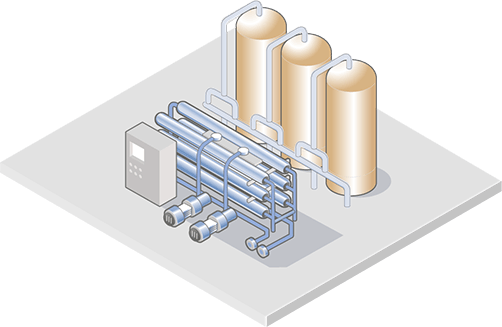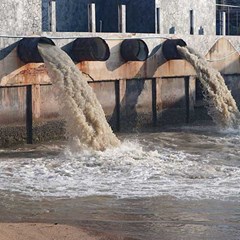Advancements and Advancements in Hazardous Waste Water Therapy Technologies
The landscape of commercial wastewater therapy is undertaking a transformative change, driven by innovations that improve both effectiveness and sustainability. As regulatory standards develop, the integration of AI and device knowing into wastewater administration systems promises to improve operations and ensure conformity.
Review of Drainage Therapy Technologies
Wastewater treatment innovations encompass a series of approaches made to eliminate pollutants from industrial effluents prior to their launch into the environment. These modern technologies are essential for preserving environmental balance and ensuring conformity with environmental regulations. The key classifications of wastewater treatment consist of physical, chemical, and organic methods, each offering unique purposes based upon the nature of the pollutants present.

Biological therapy techniques employ microbes to break down organic issue, making them particularly reliable for organic-rich effluents. Strategies like activated sludge and biofilm reactors harness the natural deterioration capacities of microorganisms, leading to considerable reductions in biochemical oxygen demand (BODY)
Advanced Purification Strategies
Advanced purification strategies stand for an important advancement in the world of commercial wastewater therapy, boosting the performance of impurity elimination procedures. Industrial Waste Water Treatment. These approaches incorporate a series of modern technologies, consisting of microfiltration, ultrafiltration, nanofiltration, and turn around osmosis, which provide consecutive obstacles for numerous fragment dimensions and chemical frameworks
Microfiltration and ultrafiltration use membrane systems to remove suspended solids, bacteria, and larger natural particles, boosting the top quality of effluent previous to additional treatment. Nanofiltration connects the space between ultrafiltration and reverse osmosis, effectively removing natural substances and divalent ions, thus minimizing the tons on downstream processes.
Reverse osmosis provides the greatest degree of purification by allowing only water and small particles to go through its semi-permeable membranes, making it ideal for reclaiming premium water from commercial effluents. Recent innovations in membrane modern technology, consisting of the development of more fouling-resistant and sturdy products, have significantly boosted functional performance and lowered expenses.
Incorporating these innovative filtration methods not only boosts the overall therapy process yet also adds to sustainability efforts by making it possible for water reuse and resource recuperation in industrial setups. (Industrial Waste Water Treatment)
Biological Treatment Innovations

Additionally, the development of crafted biological systems, such as membrane layer bioreactors (MBRs), integrates biological therapy with sophisticated membrane purification. This integration permits higher effluent quality and lowered footprint, making it ideal for space-constrained industrial centers. Advancements in genetically engineered microbes have additionally emerged, boosting the biodegradation of particular impurities, such as pharmaceuticals and hefty metals, that are commonly challenging to get rid of.
Furthermore, the execution of bioaugmentation techniques, where beneficial microorganisms are presented to improve the existing organic treatment procedures, has actually shown appealing results in enhancing therapy performance. These innovations jointly indicate a trend in the Get the facts direction of even more sustainable and reliable organic treatment approaches that can adjust to the progressing complexities of industrial wastewater streams. As markets proceed to prioritize environmental conformity, these organic innovations will play an essential role in wastewater administration.

Resource Recovery Approaches
In industrial settings, the assimilation of resource recuperation techniques has come to be progressively vital for boosting sustainability and reducing waste. These approaches concentrate on extracting beneficial materials and power from wastewater streams, thus changing potential toxins into multiple-use resources.
One noticeable method is vitamins and mineral healing, where nitrogen and phosphorus, often present over in wastewater, are captured and exchanged plant foods. This not just decreases ecological impacts however additionally offers a round economic climate solution for farming applications. Additionally, innovations such as anaerobic food digestion permit the conversion of organic waste right into biogas, a renewable resource resource that can counter nonrenewable fuel source use in industrial procedures.
Furthermore, advanced purification and membrane innovations assist in the recovery of commercial byproducts such as salts and steels. These recovered materials can be rehabilitated into manufacturing procedures, reducing the requirement for virgin sources.
Future Fads in Waste Water Administration
As sectors increasingly prioritize sustainability, the future of wastewater monitoring is readied to go through considerable changes. Technical innovations, such as expert system and artificial intelligence, will certainly make it possible for more efficient monitoring click here for more and management of wastewater systems. These innovations can anticipate maintenance requirements, enhance treatment processes, and improve decision-making, eventually minimizing functional expenses and environmental effect.
Additionally, the combination of circular economic climate principles will play an important function in wastewater administration. Industries are anticipated to move towards systems that not only treat wastewater but additionally recover beneficial sources, such as nutrients, water, and power. This shift will certainly reduce waste and promote the reuse of materials, aligning with international sustainability objectives.
Arising treatment techniques, such as membrane layer bioreactors and progressed oxidation processes, will further boost the performance of wastewater therapy, permitting better effluents appropriate for reuse. Furthermore, regulatory structures are most likely to develop, emphasizing more stringent requirements for wastewater discharge and encouraging sectors to embrace innovative therapy remedies.
Final Thought
In verdict, the evolution of industrial wastewater therapy innovations shows a substantial change in the direction of boosted performance and sustainability (Industrial Waste Water Treatment). Industrial Waste Water Treatment Technologies in innovative filtration techniques, biological treatments, and resource healing approaches highlight the sector's commitment to environmental stewardship.
The landscape of industrial wastewater treatment is going through a transformative shift, driven by advancements that boost both performance and sustainability.Wastewater therapy technologies encompass a range of methods developed to eliminate pollutants from commercial effluents before their release into the atmosphere.Taking advantage of the power of organic procedures has actually led to considerable advancements in the therapy of industrial wastewater.Furthermore, the application of bioaugmentation methods, where helpful microorganisms are presented to improve the existing biological treatment procedures, has actually revealed appealing results in improving treatment efficiency. These technologies jointly represent a trend towards even more lasting and effective organic therapy methods that can adjust to the developing complexities of commercial wastewater streams.